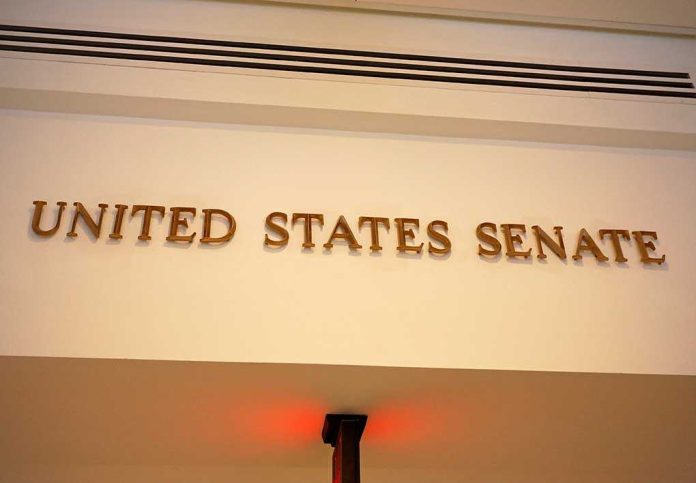
The enduring filibuster remains a thorn in the side of Senate Republicans, as they struggle to align with former President Trump’s calls for its abolition.
Story Overview
- Senate Majority Leader lacks sufficient votes to abolish the filibuster.
- Bipartisan resistance continues to uphold the filibuster as a Senate tradition.
- Trump pressures Senate Republicans to make changes, yet faces significant obstacles.
- Legislative gridlock persists amidst procedural and political divisions.
The Challenge of Eliminating the Filibuster
The Senate Majority Leader has publicly acknowledged the lack of support necessary to eliminate the filibuster, despite persistent calls from former President Donald Trump. This procedural rule requires a 60-vote supermajority to end debates on most legislation, acting as a hurdle in advancing the Republican legislative agenda. Trump, a vocal advocate for its removal, continues to push for change, highlighting the tension between his vision and Senate realities.
Despite Trump’s repeated calls, the Senate has historically shown reluctance to alter the filibuster rules. This resistance is rooted in a bipartisan belief that the filibuster safeguards minority party rights, preventing any single party from wielding unchecked power. The procedural complexity and long-standing tradition surrounding the filibuster make it a challenging rule to eliminate, even with the backing of influential figures like Trump.
Historical Context and Bipartisan Opposition
The filibuster has been a part of Senate procedure since the 19th century, gaining prominence as a tool for minority parties to exert influence. The rule was significantly altered in 1975 when the cloture threshold was lowered to three-fifths, or 60 votes. Despite changes made through the “nuclear option” for nominations in 2013 and 2017, the legislative filibuster remains intact due to bipartisan resistance. This opposition underscores the value placed on minority rights and deliberation within the Senate, despite increasing partisan gridlock.
Moderate senators from both parties often resist drastic rule changes, fearing the loss of procedural stability and minority leverage. This bipartisan coalition acts as a significant veto point against attempts to abolish the filibuster, illustrating the complex power dynamics at play. The Senate Majority Leader must navigate these dynamics, balancing party demands with institutional norms to maintain legislative efficiency and unity.
Impact on Legislative Process and Political Landscape
The inability to eliminate the filibuster has significant implications for the legislative process and political landscape. In the short term, legislative gridlock persists, frustrating lawmakers and delaying major reforms. Trump’s influence over Senate Republicans appears limited, as internal divisions and procedural traditions prevail. In the long term, the filibuster is likely to remain unless there is a dramatic shift in party composition, constraining future legislative agendas.
Senate Majority Leader Doesn't Have Enough Votes to Eliminate the Filibuster Despite Trump's Wishes https://t.co/x950FojbIO
— ConservativeLibrarian (@ConserLibrarian) November 5, 2025
As lawmakers grapple with stalled priorities, advocacy groups continue to lobby for or against filibuster reform. The general public may experience delays in significant legislation, impacting sectors like healthcare, energy, and finance. This enduring procedural hurdle contributes to entrenched polarization and potential voter disillusionment, highlighting the ongoing challenges in navigating the Senate’s complex legislative landscape.
Sources:
Filibuster in the United States Senate
Senate Majority Leader says he doesn’t have the votes to eliminate filibuster despite Trump’s wishes
The votes aren’t there to kill filibuster, Thune says












